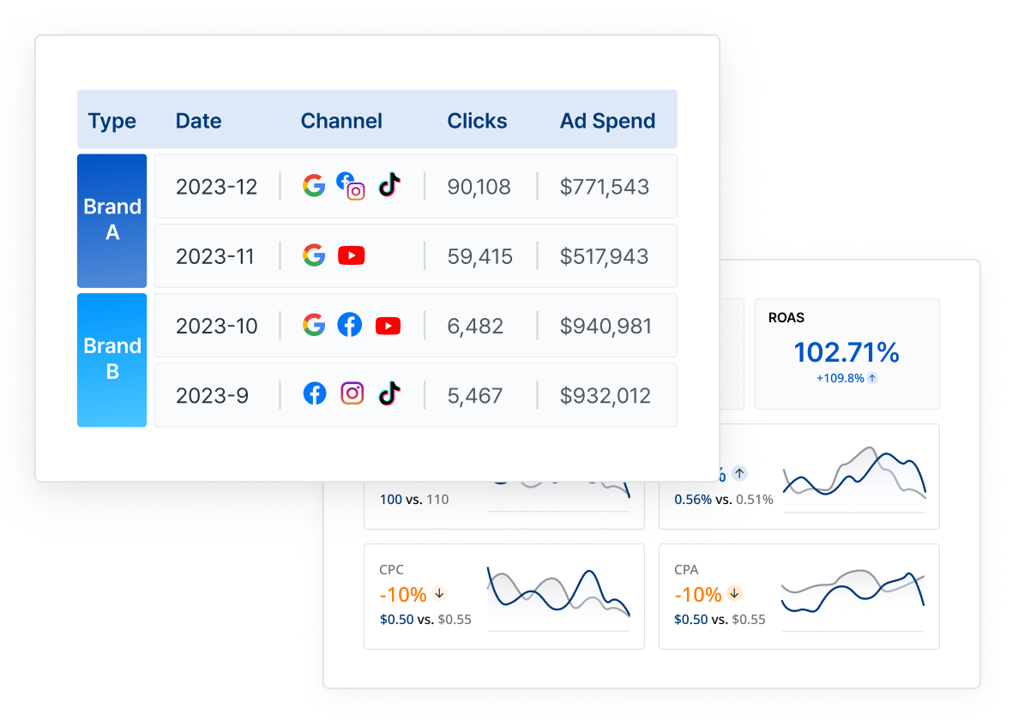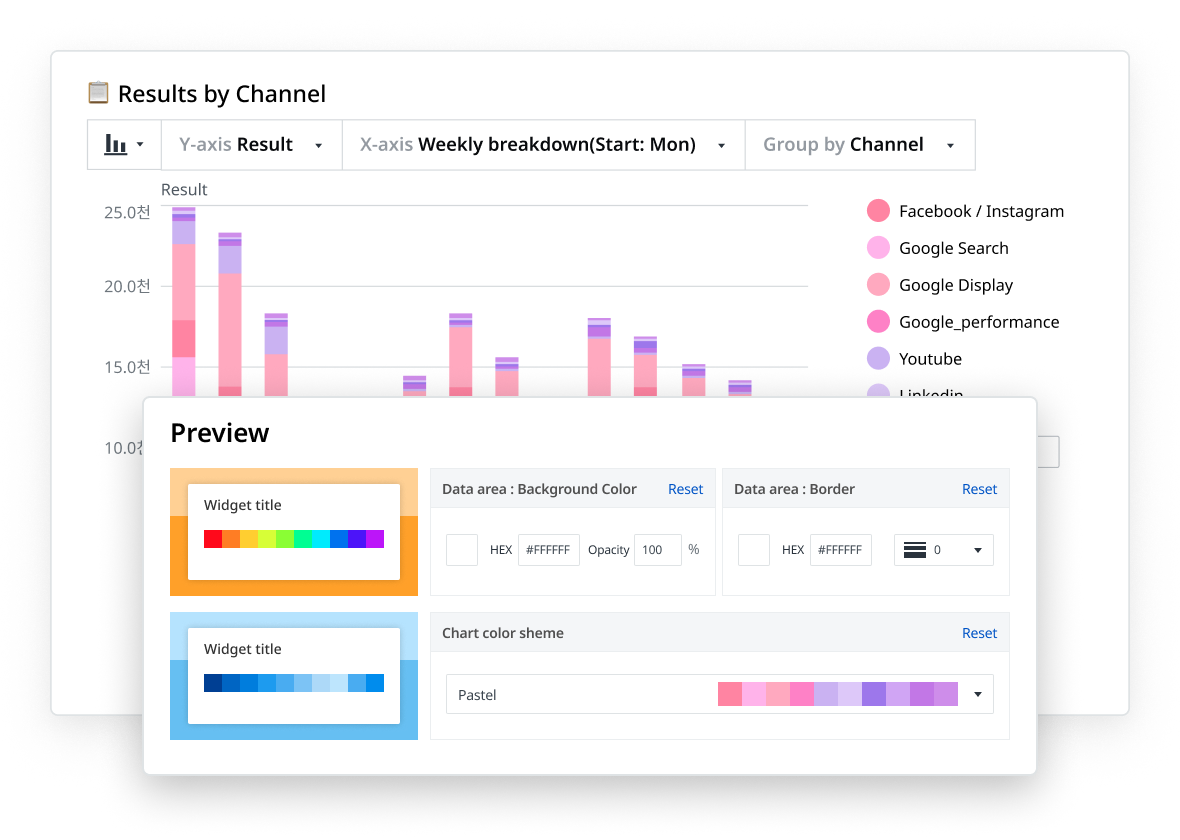Refer a partner and get paid! Earn 20% of all qualifying subscriptions referred to our team 👉

Learn More
See all your Meta Ads KPIs at a glance and get an unbiased picture of ROAS. Find out which keywords, emojis, and colors in your ads drive conversions.



A Meta Ads dashboard is an automation tool that consolidates and analyzes data from various data sources using APIs, giving you a comprehensive view of all your ad campaigns and digital marketing efforts in one place.
An external dashboard goes beyond the native analytics provided by Facebook and Instagram. On Adriel, you can get a more accurate picture of your ROAS with custom ad metrics, understand the customer journey, and attribute conversions to specific ad creatives. Generate white labeled reports, get ad creative insights, and make data-driven decisions.
To understand the behaviors of your prospects, from impressions to purchase, we recommend you set up your Meta and Facebook advertising dashboard like a funnel. Here’s a step-by-step breakdown:
For starters, understand how many people saw each of your ads and clicked through them. Track metrics like Total Impressions, Link Clicks, CTR (Click-through rate), and CPM (Cost-per-1000 impressions).

Once you have a good idea of your CTR and ads, go into how much percentage of the link clicks resulted in a desired action. For eCommerce businesses, this could be “add-to-cart”. For SaaS or B2B companies, the campaign objective could be “book a demo”. Again, find out which ad creative was more successful at this and why.

Finally, you also want to understand how many of the clicks led to actual purchases or booked calls. Here again, find out which ads led to conversions and which ones didn’t. Dive deep into the elements that made the ads successful and keep them in your marketing strategy bank for future Instagram and Facebook Ads campaigns.

We understand the importance of powerful ad reporting and attribution, which is why we built our Meta Ads dashboard template exactly this way. Check it out below.
Adriel’s Meta Ads dashboard shows you not just all the common brand awareness, conversions, and cost metrics, but also the performance of all your ad creatives. Here are some of them:






The total number of times any of your ads appear in the social feed of your target audience.
The total number of times people clicked on links within your ad copy, caption, image, or other call-to-action buttons that led to advertiser-specified destinations.
The price you pay for each click on your Facebook or Instagram ads.


The number of people who clicks on your ad and add a product from your website or online store to cart. They may or may not purchase it though.
.svg)
.svg)
The number of people who clicked on your add, added a product to cart, and actually checked it out.


The ratio of link clicks that led to purchases or any other campaign goal




When reporting Meta Ads, you will want to visualize Instagram Ads and Facebook Ads performance side-by-side to understand how each platform is contributing to your digital marketing goals. Here’s how it looks like on Adriel’s report template:





Integrate all your paid ad channels’ results into one marketing reporting dashboard. Curious to know how your Meta, Google, or TikTok Ads are performing? Connect all of these platforms to Adriel, and in less than 5 minutes, show all of your paid campaign results in one unified dashboard. See our integrations page for more information.


You can start from a blank page to create a marketing reporting dashboard, but what if you don’t have time? Our extensive pre-made marketing reporting dashboard library has everything you might need. Try Adriel, and you’ll have more time to research ways to increase conversion or optimize your landing pages.
Our software was expertly designed with powerful functions for marketers. But everything can be customized. Adriel’s flexibility allows you to change all aspects of the dashboard design and appearance. Impress your clients with a professional marketing reporting dashboard report for an expert brand image.













.png)

The easiest and most effective way to check your Meta and Facebook Ads is to use an external, all-in-one dashboard that displays your important metrics on a single interface.
With a centralized hub like Adriel, you can monitor ad performance in real-time, get insights on which ad creatives work better, A/B test ads, and make data-driven decisions to maximize engagement and conversions.

Setting up a Facebook Ads dashboard is super easy on Adriel. You just need to:
1. Create an account
Sign up for Adriel with your email for 14 days free. Afterwards, choose a pricing plan that suits your needs.
2. Connect your ad accounts
Simply choose from a drop-down list to import dimensions and metrics from your ad accounts, analytics tools, and mobile measurement partners.
Adriel integrates with 650+ channels including:
Check out this page for a full list of integrations.
3. Visualize your data
Use our ready-made templates to instantly see campaign performance in minutes. Or, start from a blank page and choose your data visualization widgets and graph types.

Yes, you can edit your ads across all your channels directly from Adriel.
Turn on/off specific campaigns, ad sets, or ads. Edit budgets, schedules, and CPC bids. Command once and Adriel applies changes across all channels, not just Facebook or Meta.
